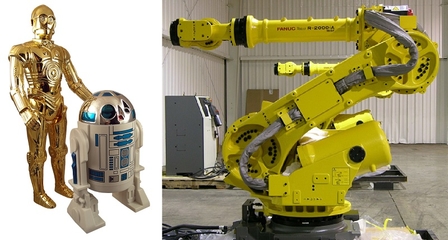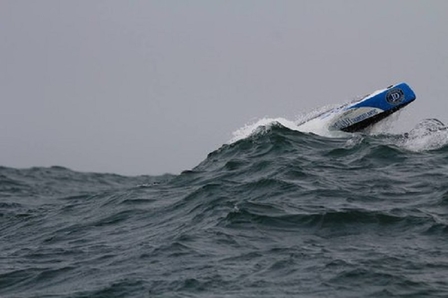Watching SKA’s Spencer Krause’s demonstration on how to solve the problems associated with robots operating in harsh, unfriendly environments, one realizes the general population may have too glamorous a vision of robots. More often than not, they are not friendly looking C3POs and R2D2s, or humorous rolling devices that look like humans in outline and form.

Most functional robots are not very sexy, mildly attractive, or even cool looking. Some look like military tanks without the gun turret or half of a tractor sans a happy, smiling Farmer Brown. Hard-working robots deployed in harsh-environment applications have more to be concerned about other than their looks…..well, their designers have much to be concerned about.
At Sensors Midwest last week, Spencer Krause, Director of Product Management at SKA, delved into the challenges and solutions faced by rugged robot designers. SKA is an engineering and design firm that helps companies design and build robots that require numerous and advanced skills.

at SKA.
They develop mechatronic systems and design physical and digital user experiences. As an example in his presentation at Sensors Midwest, Mr. Krause referred to a robot named Scout the company helped develop that they hope will be able to make an autonomous trip across an ocean.
Robots at sea are face a number of obstacles, the first being quite obvious is the corrosive and conductive nature of salt water. In addition to inducing the rapid corrosion of metal parts and the robot’s housing, water, particularly salt water, conducts electricity quite well. If components are not adequately housed, sealed, and/or potted, a tiny drop of water entering the circuit area will cause short-circuits and failure of critical functions.
After the destructive effects of salt water, shock and vibration are the next big robot killers. Anyone who has spent any time on the ocean in a small to midsize craft knows that the waters are not always calm and friendly. Rough surf, high winds, and high waves can stress even the largest of ships. The effects of shock and vibration on a small, inefficiently designed robot can cause its housing to open in spots, allowing water to flow in. Once salt water gets inside the robot’s housing, if the circuitry is not sufficiently isolated and insulated, the aforementioned short circuits and corrosion commences.

During the session, Mr. Krause explored several solutions. In terms of keeping out salt water, he illustrated potting strategies as one method of keeping water off the printed circuit boards. It was also pointed out that proper potting techniques are necessary so as to not make repairs impossible. For examples, large components such as electrolytic capacitors need not be totally covered. Also, the density of the potting compound needs to be considered so as not to induce unwanted electrical effects such as resistance and undue capacitance.
On the mechanical side, shock damage can be minimized considerably by mounting hard-faces exposed to shock and delicate electronics on flexible shock absorbers. For even more details, read Spencer’s insightful articles titled, “Choosing the Best Sensors for a Mobile Robot, Part One and Part Two.”
And if you feel like you missed something by not attending Sensors Midwest 2017, you did. But you’ll have a chance to make up for that by attending Sensors West and Sensors Midwest 2018. ~MD